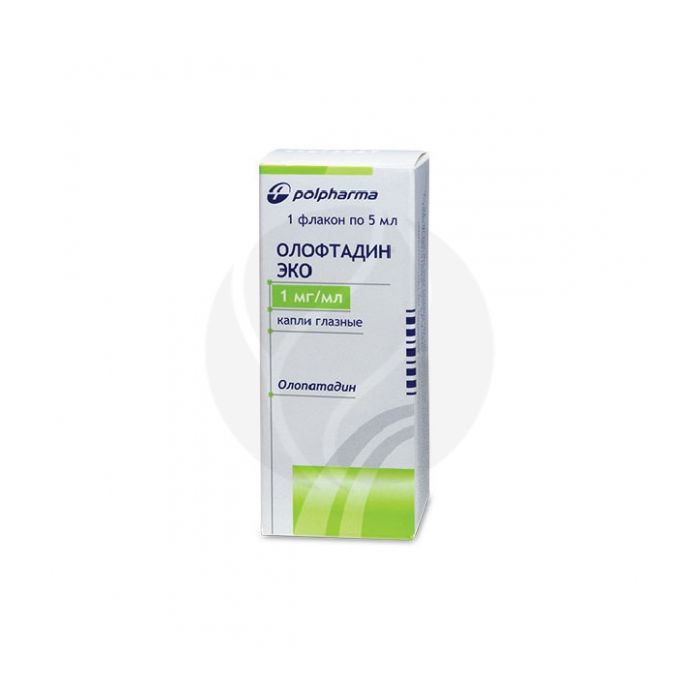Oloftadin ECO eye drops 0.1%, 5ml
Expiration Date: 05/2027
Russian Pharmacy name:
Олофтадин ЭКО капли глазные 0,1%, 5мл
It is instilled into the conjunctival sac 1-2 times / day, depending on the dosage form used.
Eye drops in the form of a clear, colorless or slightly yellowish solution.
1 ml
olopatadine hydrochloride 1.1 mg,
which corresponds to the content of olopatadine 1 mg
Excipients: sodium hydrogen phosphate dodecahydrate, sodium chloride, polysorbate 80, diluted hydrochloric acid 10%, purified water.
Hypersensitivity to olopatadin.
pharmachologic effect
Selective blocker of histamine H1 receptors, also inhibits the release of inflammatory mediators from mast cells. It has a pronounced anti-allergic effect. Does not affect ?-adrenergic receptors, dopamine receptors, m1 and m2 cholinergic receptors, as well as serotonin receptors.
Pharmacokinetics
When applied topically, systemic absorption is low. Cmax of olopatadine in blood plasma is reached within 2 hours after topical application and ranges from 0.5 ng / ml or less to 1.3 ng / ml. T1 / 2 in plasma is 3 hours. It is excreted mainly by the kidneys, 60-70% is excreted unchanged.
Side effect
Local reactions: less than 5% - blurred vision, burning and pain in the eyes, lacrimation, sensation of a foreign body in the eye, conjunctival hyperemia, keratitis, iritis, swelling of the eyelids. Systemic reactions: 0.1-1% - weakness, headache, dizziness, nausea, pharyngitis, rhinitis, sinusitis, taste change.
Application during pregnancy and lactation
Application during pregnancy and lactation (breastfeeding) is possible when the expected therapeutic effect outweighs the potential risk of side effects in the fetus or infant.
Application in children
There is no sufficient experience of use in children under the age of 3 years. Can be used in children aged 3 years and older in the same doses as in adults.
special instructions
There is no sufficient experience of use in children under the age of 3 years. Can be used in children aged 3 years and older in the same doses as in adults.
Influence on the ability to drive vehicles and use mechanisms
If the patient, after the use of olopatadine, temporarily decreases the clarity of vision, then it is not recommended to drive a car and engage in other activities that require a high concentration of attention and speed of psychomotor reactions until it is restored.

